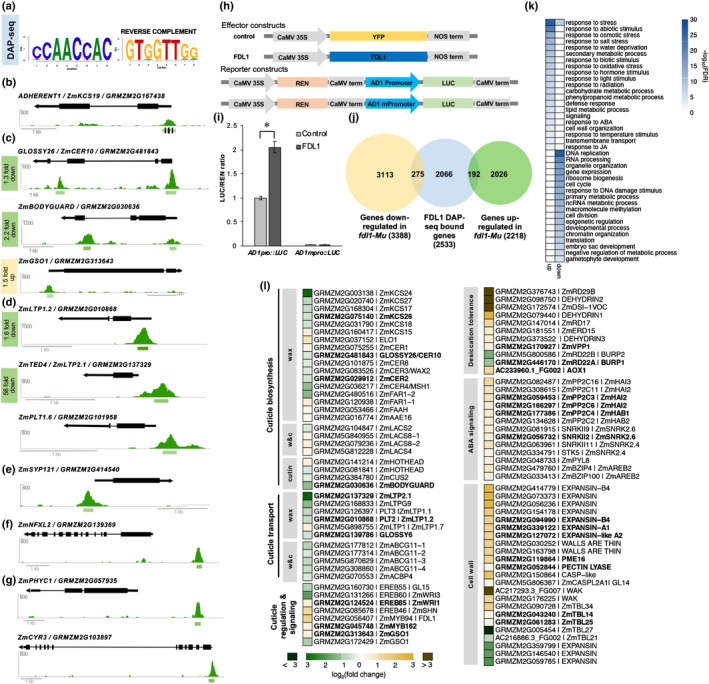Fig. 6.

Direct targets of FDL1 function. Genome wide binding and differential expression analysis of FDL1/ZmMYB94 in maize. (a) Top enriched motif present in FDL1 bound regions identified by DAP‐seq. (b) The 5′UTR of AD1/KCS19 is directly bound by FDL1. Green bars represent 200 bp peak. Black lines show location of CCAACC motifs tested by mutational analysis. (c) Examples of additional cuticular wax and cutin related genes that are directly bound by FDL1. (d) FDL1 directly binds several LIPID TRANSFER PROTEINS (LTPs) genes putatively involved in secretion of cuticular wax. (e) FDL1 directly binds SYNTAXIN 121, encoding a SNARE complex protein involved in membrane trafficking and osmotic homeostasis, previously not linked to cuticle formation. (f) FDL1 directly binds ZmNFXL2, an NF‐X transcription factor recently associated with cuticle defects. (g) Several light‐regulated genes (ZmPHYTOCHROME C, ZmCRYPTOCHROME 3) are directly bound by FDL1, suggesting a link between cuticle formation and light. (h) Schematic diagram of effector and reporter constructs used for transcriptional activation assay. (i) AD1 transcriptional activation by FDL1. Error bars show SD, n = 4. *, P < 0.001, according to Student's t‐test. (j) Overlap of genes directly bound by FDL1 in DAP‐seq and genes differentially expressed in fdl1‐Mu RNA‐seq in 3‐d old coleoptiles. (k) GO enrichment analysis of upregulated and downregulated genes in fdl1‐Mu coleoptiles. (l) Differentially expressed genes in fdl1‐Mu coleoptiles involved in cuticle formation and other processes. Bold font indicates genes directly bound by FDL1 in DAP‐seq. w&c, wax and cutin.
